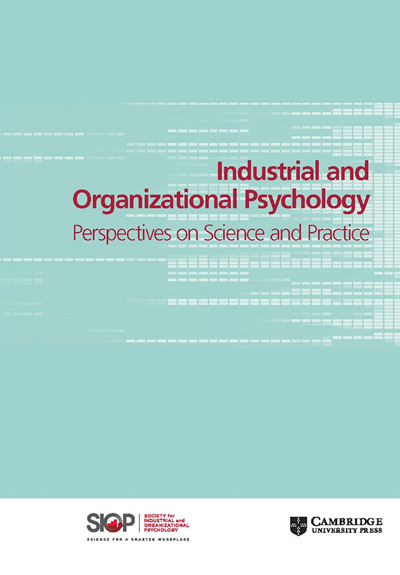调查人格的阴暗面:警察出轨者评估案例
IF 4.3
3区 心理学
Q1 PSYCHOLOGY, APPLIED
Industrial and Organizational Psychology-Perspectives on Science and Practice
Pub Date : 2022-12-01
DOI:10.1017/iop.2022.76
引用次数: 1
摘要
Dhanani等人(2022)强调了通常用于警察选拔的人格测量的局限性,但他们忽视了可能对警察选拔和培训至关重要的人格方面。正如Dhanani等人所指出的那样,执法机构过于依赖人格测量,而这些人格测量并未优化,无法预测对有效警务工作至关重要的行为。例如,临床措施针对的是慢性、极端障碍,反映不经常发生或仅在某些情况下发生的其他问题行为的能力有限。此外,组织心理学家强调了与评估临床选择障碍相关的潜在法律约束(Melson-Silimon et al., 2019)。其他经常使用的针对正常行为范围的人格评估,如基于五因素模型的测量,可以预测警察表现的某些组成部分(例如,Black, 2000;Detrick & Chibnall, 2006;foreo et al., 2009;霍根,1971;Hogan & Kurtines, 1975;Winterberg et al., in press)比临床人格测量(Varela et al., 2004)更好,但在预测不太频繁、高威胁情况下的行为和决策方面仍然不足。虽然这种情况比较罕见,但在评估警察的表现和结果时,这些情况更值得关注,因为它们可能对警察和平民造成危及生命的后果,并且已被确定为最可能发生对少数民族不利影响的关键情况。然而,Dhanani等人没有提到的是亚临床黑暗人格测量,通常被称为工作环境中的脱轨者,专门用于解决临床和正常范围人格测量中的缺陷(Guenole, 2014;西班牙等人,2014)。亚临床特征是人格倾向,经常是人际厌恶,但不一定是功能失调的水平,需要临床干预。相反,这些倾向代表了处理挫折和推进自己议程的潜在有毒策略(Hogan等人,2021)。因此,在高压力情况下,或者当个体觉得不需要自我监控自己的行为时,脱轨者经常表现为重要的行为预测因素(西班牙等人,2016;伤害,2022)。因此,脱轨者与执法工作相关,因为它的特点是经常暴露于高压力环境,需要快速决策的模糊情况,以及原发性和继发性创伤。事实上,警察主题专家和美国公众样本都同意,许多亚临床特征对成功的警察表现很重要(Winterberg等人,出版中)。许多应用人格研究者都熟悉黑暗三位一体(即自恋、马基雅维利主义和精神病)。然而,在选择设置中使用的亚临床特征的测量,如Hogan发展调查(Hogan & Hogan, 2009),包括更广泛的亚临床特征,这些特征与DSM-IV轴-2人格障碍密切相关,并捕捉到偏执狂、情绪爆发、不诚实的顺从和被动攻击行为的亚临床倾向。亚临床黑暗特征评估对执法人员的选择具有重要的优势。现有证据表明,脱轨倾向的基本比率相对较高本文章由计算机程序翻译,如有差异,请以英文原文为准。
Investigating the dark side of personality: A case for derailer assessment in police
Dhanani et al. (2022) highlight limitations with the personality measures typically used for police selection, but they overlooked aspects of personality that may be critical for police officer selection and training. As Dhanani et al. noted, law enforcement agencies rely too heavily on personality measures that are not optimized to predict behaviors critical to effective policework. For example, clinical measures target chronic, extreme disorders and have a limited ability to reflect additional problematic behaviors that occur infrequently or only under some circumstances. Further, organizational psychologists have emphasized potential legal constraints associated with assessing clinical disorders in selection (Melson-Silimon et al., 2019). Other frequently used personality assessments targeted at the normal range of behavior, such as measures based on the five factor model, may predict some components of police performance (e.g., Black, 2000; Detrick & Chibnall, 2006; Forero et al., 2009; Hogan, 1971; Hogan & Kurtines, 1975; Winterberg et al., in press) better than clinical personality measures (Varela et al., 2004), but still fall short in the prediction of behaviors and decisions in less frequent, high-threat situations. Although rarer, these situations are of greater concern when evaluating police performance and outcomes as they potentially have life-threatening consequences for both officers and civilians, and have been identified as critical instances when adverse effects on minorities are most likely to occur. However, going unmentioned in Dhanani et al. are subclinical dark personality measures, often referred to as derailers in work settings, that are specifically designed to address deficiencies in both clinical and normal-range personality measures (Guenole, 2014; Spain et al., 2014). Subclinical traits are personality tendencies that are frequently interpersonally aversive but are not necessarily dysfunctional at a level that would require clinical interventions. Rather, these tendencies represent potentially toxic strategies for dealing with frustrations and advancing one’s own agenda (Hogan et al., 2021). Consequently, derailers frequently manifest as important predictors of behavior in high-stress situations or when individuals feel little need to self-monitor their behaviors (Spain et al., 2016; Harms, 2022). Derailers are thus relevant to law enforcement work because it is characterized by regular exposure to high-stress environments, ambiguous situations requiring quick decisions, and primary and secondary trauma. Indeed, both police subject matter experts and samples of the US public agree that many subclinical traits are important for successful police performance (Winterberg et al., in press). Many applied personality researchers are familiar with the dark triad (i.e., narcissism, Machiavellianism, and psychopathy). However, measures of subclinical traits used in selection settings, such as the Hogan Development Survey (Hogan & Hogan, 2009), include a broader array of subclinical traits that map closely to the DSM-IV Axis-2 personality disorders and capture subclinical tendencies toward paranoia, emotional outbursts, disingenuous compliance, and passive-aggressive behaviors. Subclinical dark trait assessments have important advantages useful for selection in the law enforcement context. Available evidence suggests relatively high base rates of derailer tendencies
求助全文
通过发布文献求助,成功后即可免费获取论文全文。
去求助
来源期刊

Industrial and Organizational Psychology-Perspectives on Science and Practice
PSYCHOLOGY, APPLIED-
CiteScore
7.70
自引率
10.10%
发文量
85
期刊介绍:
Industrial and Organizational Psychology-Perspectives on Science and Practice is a peer-reviewed academic journal published on behalf of the Society for Industrial and Organizational Psychology. The journal focuses on interactive exchanges on topics of importance to the science and practice of the field. It features articles that present new ideas or different takes on existing ideas, stimulating dialogue about important issues in the field. Additionally, the journal is indexed and abstracted in Clarivate Analytics SSCI, Clarivate Analytics Web of Science, European Reference Index for the Humanities and Social Sciences (ERIH PLUS), ProQuest, PsycINFO, and Scopus.
 求助内容:
求助内容: 应助结果提醒方式:
应助结果提醒方式:


